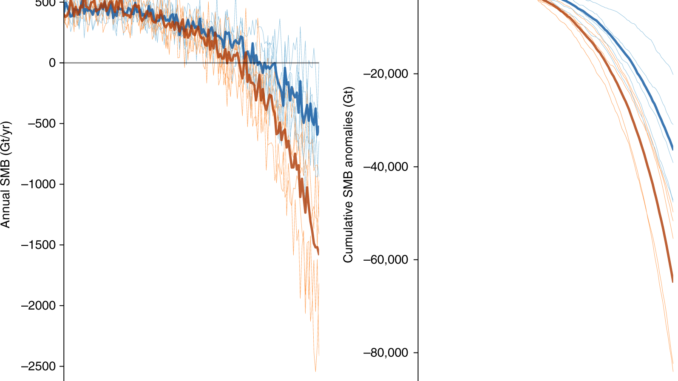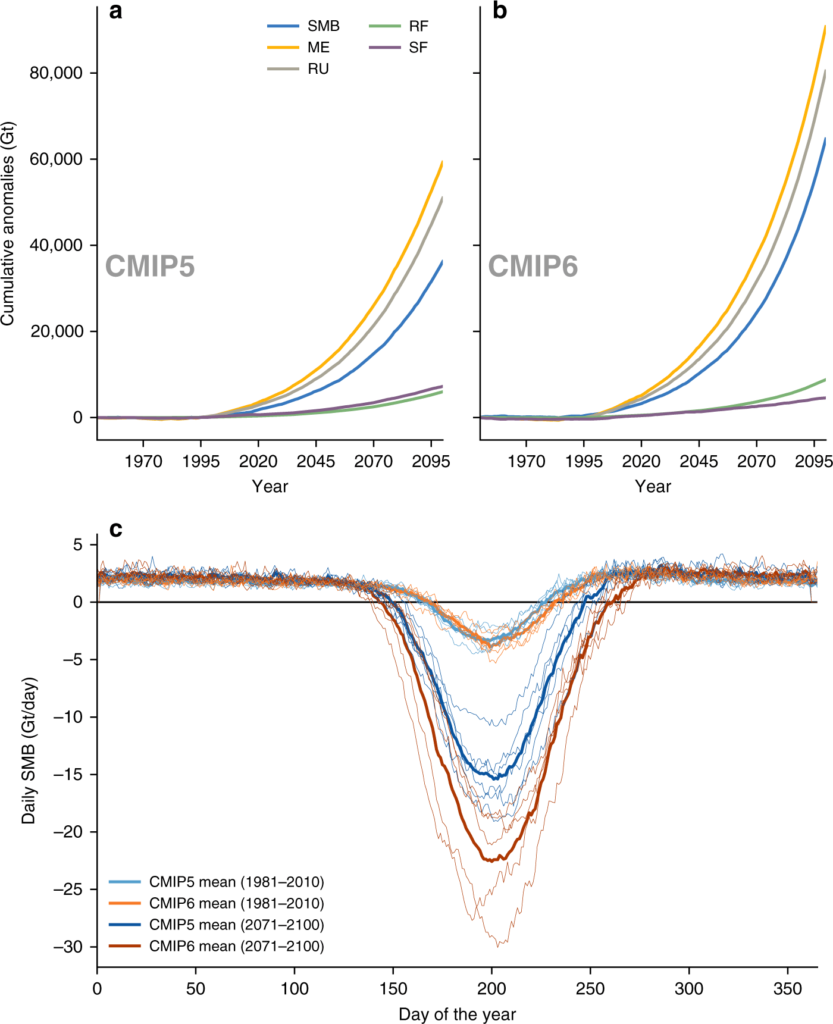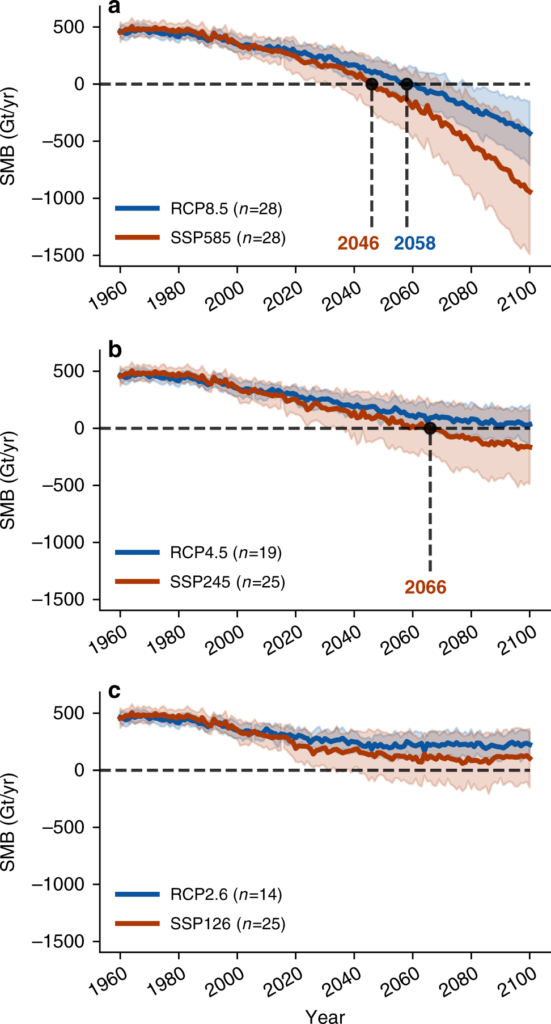
Figure: Greenland surface mass balance comparison between downscaled CMIP5 and CMIP6 MAR simulations (Hofer et al., 2020)
PROTECT paper number 5 “Greater Greenland Ice Sheet contribution to global sea level rise in CMIP6” written by Stefan Hofer, Charlotte Lang, Charles Amory and others, was published on 15 December 2020 in Nature Communications.
Here are the keys findings:
- Greenland would likely melt a lot more in a CMIP6 world than in CMIP5
- We use a regional climate model (#MAR) as a magnifying glass to downscale 6 #CMIP5 and 5 #CMIP6 extreme high-emission simulations over Greenland. Average sea level contribution from surface mass loss: CMIP5 9.9 cm, CMIP6 17.8 cm (Insert up arrow) +80%.
- Extreme high-emission scenario surplus in surface-based mass loss in CMIP6 comes from extra melt during melt season. 21st century melt 59000 Gt (#CMIP5) vs 91000 Gt (#CMIP6). Peak ablation intensity -15 Gt/day vs -23 Gt/day, 22 days longer melt season in #CMIP6 in 2071-2100

- Parts of the extra surface melt are caused by a higher temperature increase in the Arctic in #CMIP6. This is interesting because in theory #RCP85 and #SSP585 should have a +- similar surface forcing in 2100 → #CMIP6 temperatures are more sensitive to emissions than #CMIP5!
- Only higher temperatures? We find an increase in longwave radiation due to higher temperatures, but also a greater decrease in incoming solar radiation (thicker clouds?) and more absorbed solar radiation (melt-albedo feedback) in CMIP6, especially during summer melt season.
- This would fit with some of our previous work in @NatureClimate, showing that #CMIP5 models with thicker and more liquid containing #clouds melt the most
- Using the statistical connection between Greenland temperatures in global models and melt in our high-resolution ensemble, we find that Greenland would lose more mass across middle- (#SSP245) and low (#SSP126) emission scenarios too in a #CMIP6 future compared to #CMIP5.

- In general, #CMIP6 #Greenland mass loss is equivalent to #CMIP5 scenarios with twice the radiative forcing. SSP126–>RCP4.5, SSP245–>RCP8.5, and SSP585–>n/a
- Caveats: We cannot say whether #CMIP6 or #CMIP5 is more likely to “come true”. On paper #CMIP6 models have more sophisticated physics and higher resolution, but there are suggestions that CMIP6 warming does not fit with paleoclimate records (e.g. https://nature.com/articles/s41558-020-0764-6…)
- Caveats: We use a fixed ice sheet, so we don’t take into account melt-elevation, melt-geometry and melt-ice sheet extent feedbacks. Also, exact numbers will vary depending on what ice sheet mask one uses in their (regional) climate model.
- Take-home-message: Greenland would melt faster and contribute more to sea level rise in #CMIP6 than in #CMIP5. We need to find out: 1) Physical drivers (clouds?) 2) What happens to #Antarctica in #CMIP6 (https://tc.copernicus.org/preprints/tc-2020-291/…)? 3) Can we trust CMIP6 climate sensitivity?
